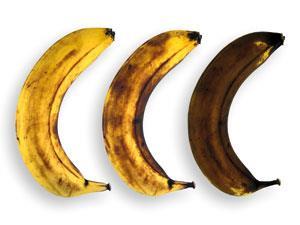
A new carbon nanotube-based sensor can sniff out sub-ppb concentrations of ethylene, the plant hormone involved in the ripening of fruit. Birgit Esser, Jan Schnorr and Timothy Swager from Massachusetts Institute of Technology in the US report the new technology, which can be made from commercially available materials, in Angewante Chemie, International Edition (DOI: 10.1002/anie.201201042).
The sensor consists of gold electrodes linked by a mixture of single walled carbon nanotubes and a copper complex that binds to ethylene, changing the electronic environment of the nanotubes and hence their conductivity. A potentiostat can then measure this change, which gives a quantitative reading of the ethylene concentration.For fruit like bananas and avocados that use ethylene to signal ripening, the concentrations needed are between 0.1 and 1 ppm and so storage facilities are kept below this. However, current ethylene measurement requires taking air samples and subjecting them to gas chromatography or laser acoustic spectroscopy that cannot be performed in situ. The new device could instead find itself on the wall of storehouses and give a more immediate reading, helping prevent food spoilage.






No comments yet